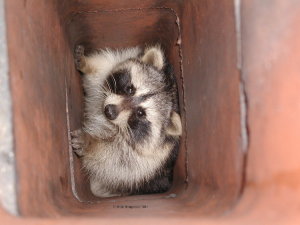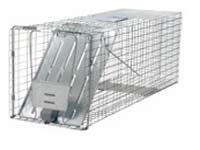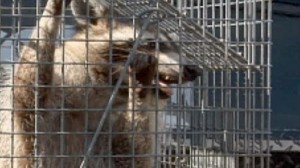 A wild raccoon is just as smart and nosy as urban raccoons. The one major difference is that urban raccoons have fewer enemies than wild raccoons do and urban raccoons are pretty tolerant of all of the urban noises and even are not really that afraid of humans. Wild raccoons will quickly run in the other direction when they see humans while urban raccoons can be seen walking down the middle of the street from time to time during the day or night. Either way they are animals that will take your food and break into your home to find food or build a den.
A wild raccoon is just as smart and nosy as urban raccoons. The one major difference is that urban raccoons have fewer enemies than wild raccoons do and urban raccoons are pretty tolerant of all of the urban noises and even are not really that afraid of humans. Wild raccoons will quickly run in the other direction when they see humans while urban raccoons can be seen walking down the middle of the street from time to time during the day or night. Either way they are animals that will take your food and break into your home to find food or build a den.
Wild Raccoon – Den in Your Attic
Given a suitable looking den, wild raccoons will take up residence in any location where there is food, water and protection from the elements. This can be the hollow of a tree or it can be your attic if they wander into suburbia or if suburbia encroaches on their regular hunting grounds. If there are a lot of green areas or forests close by to new homes being built, you can be sure that these wild raccoons will be curious and will take up residence in your home if there is shelter to be found.
Dealing with raccoons that have entered your attic can be a troubling for many people. They cause a mess, they damage your home, they may even tear a hole in the wall getting into the attic. This can cost thousands in repairs, but first you have to get rid of the wild raccoons and keep them out on a permanent basis. There is a right way to get rid of these raccoons and there is a wrong way to go about getting rid of them, which we will discuss in the following paragraphs. Note that they can gain access to your roof, by climbing the bricks up the side of your home or perhaps crawl along a branch of a tree that overhangs your roof. Either way it does not really matter too much how they get there, the trick is to stop them getting inside your attic.
Getting Rid of Raccoons
The best way to stop them is to install a one way trap door which allows them to get out of your attic, but not back into your attic. You need to also make sure that if they have babies, they can get out as well. If the young cannot travel on their own and cannot get out through the trap door, the wild raccoon parents are very protective and will want to rescue them if they can. This could include ripping another hole in your roof or your sidewall to your home which can be quite damaging and cost thousands of dollars to repair after you get rid of them finally.
Loud noises do not work, mothballs do not work, even trapping them with a humane trap does not work. We tried them all and found that the only sure way to get rid of them is to use the one-way trap door as explained above. The loud noise did not bother them at all, and the mothballs also did not work other than to smell up our attic. they just totally ignored them. I guess I do not have any moths in the attic now. We are not sure if I did have any in the first place, but they sure did not work on the raccoons.
Trapping does not Work
Even trapping did not work. They are just too smart to go inside to get the food in the trap. They actually reached though the wire mesh from the outside to get at the food. I was feeding them more than just trapping them. The younger less experienced raccoons were easy to catch, but the adults who had obviously been caught before were not going into that trap regardless of how much food was available. Anyway hope this all helps.
Wild raccoons are very resourceful, so take them seriously and ignore the self-help articles about using loud noises, spraying various odors etc. They just do not work. They are a waste of time and money. Use the one way trap door approach.



